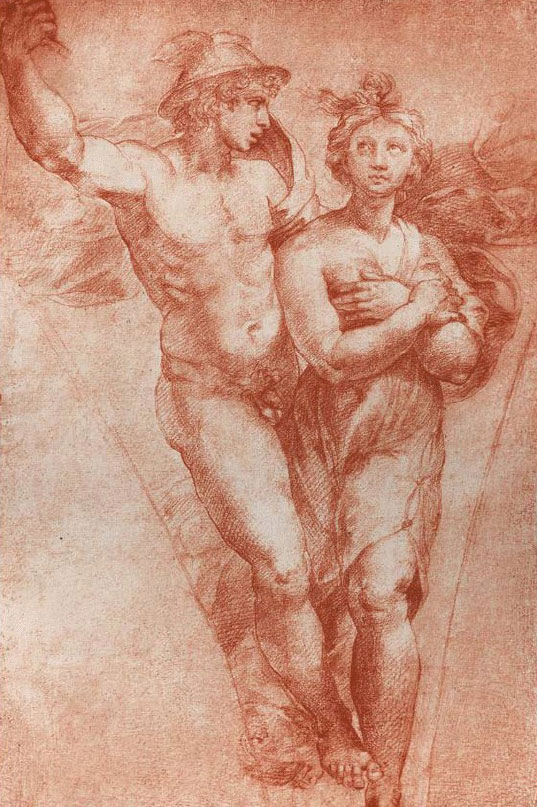- Relief printing
- Intaglio and planographic printing
- Color printing
- Bits and pieces
- Early photography in silver
- Non-silver processes
- Modern photography
- Color notes
- Color photography
- Photography in ink: relief and intaglio printing
- Photography in ink: planographic printing
- Digital processes
- Where do we go from here?
Carbon Printing

Carbon print. Edizioni Brogi. Psyche. c. 1910. 14 1/2 x 11” (36.8 x 27.9 cm). The Museum of Modern Art, New York. Gift of Richard Benson.
Here is a simplified description of carbon printing. It starts with a sheet of gelatin-coated paper, which would have been purchased ready made. This paper is insensitive to light, but holds a relatively thick coating of gelatin that has had a great deal of pigment worked into it. The paper, called “carbon tissue,” curls severely because the gelatin is only coated on one side. A sheet of it is cut to the desired print size and immersed in a weak solution of potassium bichromate, then withdrawn and squeegeed onto a polished sheet of chrome-plated steel called a “ferrotype tin.” After being dried, usually with a fan, the sheet comes off the ferrotype with a highly polished surface. This carbon tissue—which the potassium bichromate has sensitized to blue light—is exposed by contact to a negative, usually with sunlight or an electric arc lamp.

Carbon print. Raphael Sanzio. Cupid and Psyche. c. 1510. (Printed by Adolphe Braun, c. 1880). 13 1/2 x 9” (34.3 x 22.9 cm). The Museum of Modern Art, New York. Gift of Richard Benson.
After exposure, the paper is immersed in a tray of cold water for a few minutes and then, while submerged, brought into contact with a sheet of “receiver” paper, which has a prepared surface that will stick to the gelatin. This sandwich of two sheets—hopefully with no bubbles between them—is then taken out of the tray and placed under a weight for about a half hour. Next, the pair is immersed in a tray of hot water at about 100 degrees Fahrenheit. After a few minutes in the hot water, gelatin and pigment can be seen oozing out of the sandwich, indicating that the gelatin has softened. The carbon tissue can then be gently peeled off the receiver sheet. Once this is done, the print appears on the receiver, and a few more minutes of gentle rocking washes away the remaining soluble gelatin and its pigment.
The process is completed by shifting to cold water and then air-drying the print (which will tenaciously try to ruin itself by curling). If this sounds complex, it is. Unfortunately the print thus made is backward—reversed from left to right. This is corrected by once more wetting the print and transferring the gelatin from the old receiver to a new one. Then the final print can be dried and mounted to permanently counteract its tendency to curl. Carbon printing is the only practical photographic process that can make monochromatic prints in any color. The tissue is prepared with pigmented gelatin, and the pigment used can be virtually any that is available to painters. Since most of those colorants are inert, which is to say that they can be mixed in water or oil without reacting or changing color, carbon tissue could be manufactured and sold in a wide range of colors.

